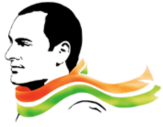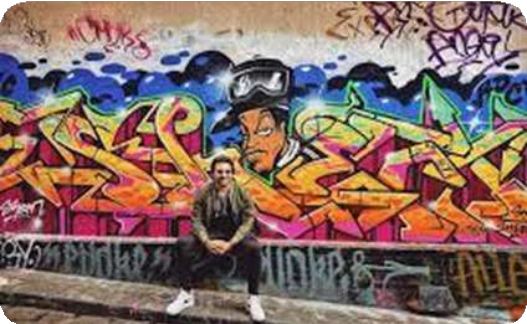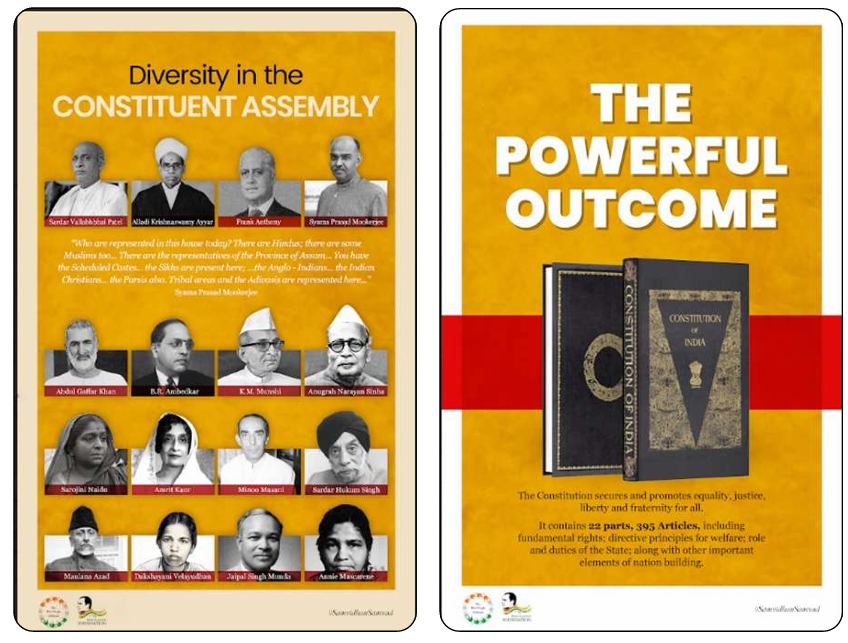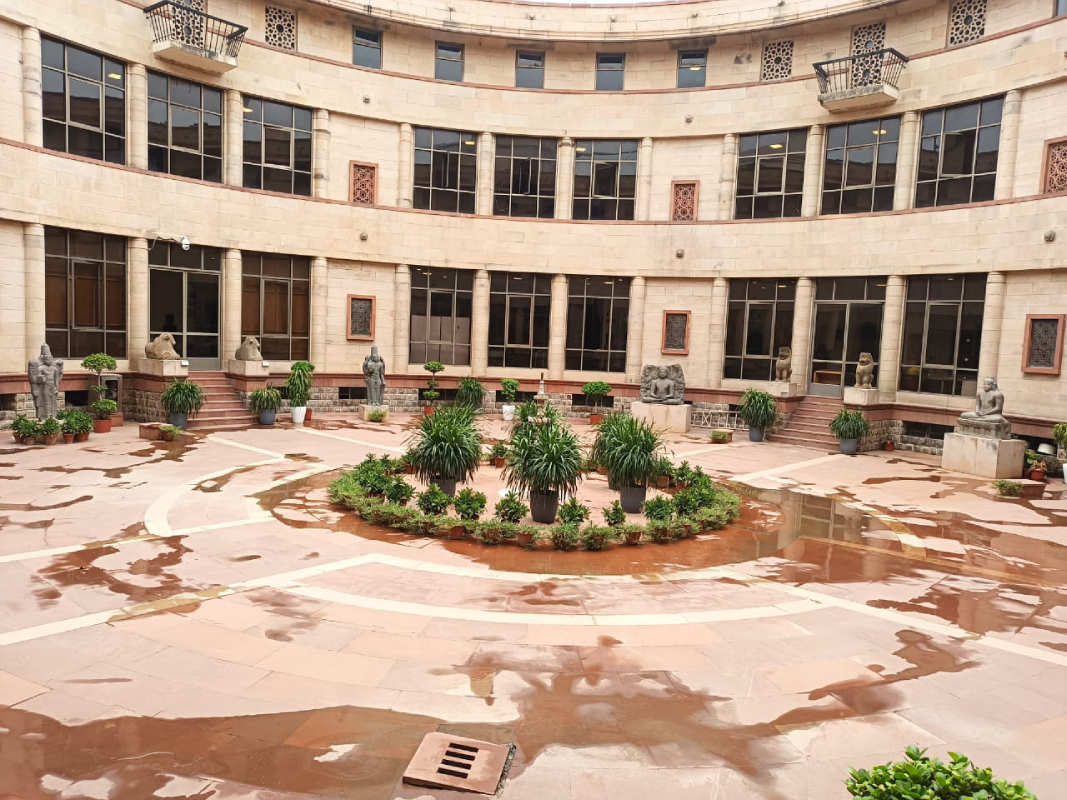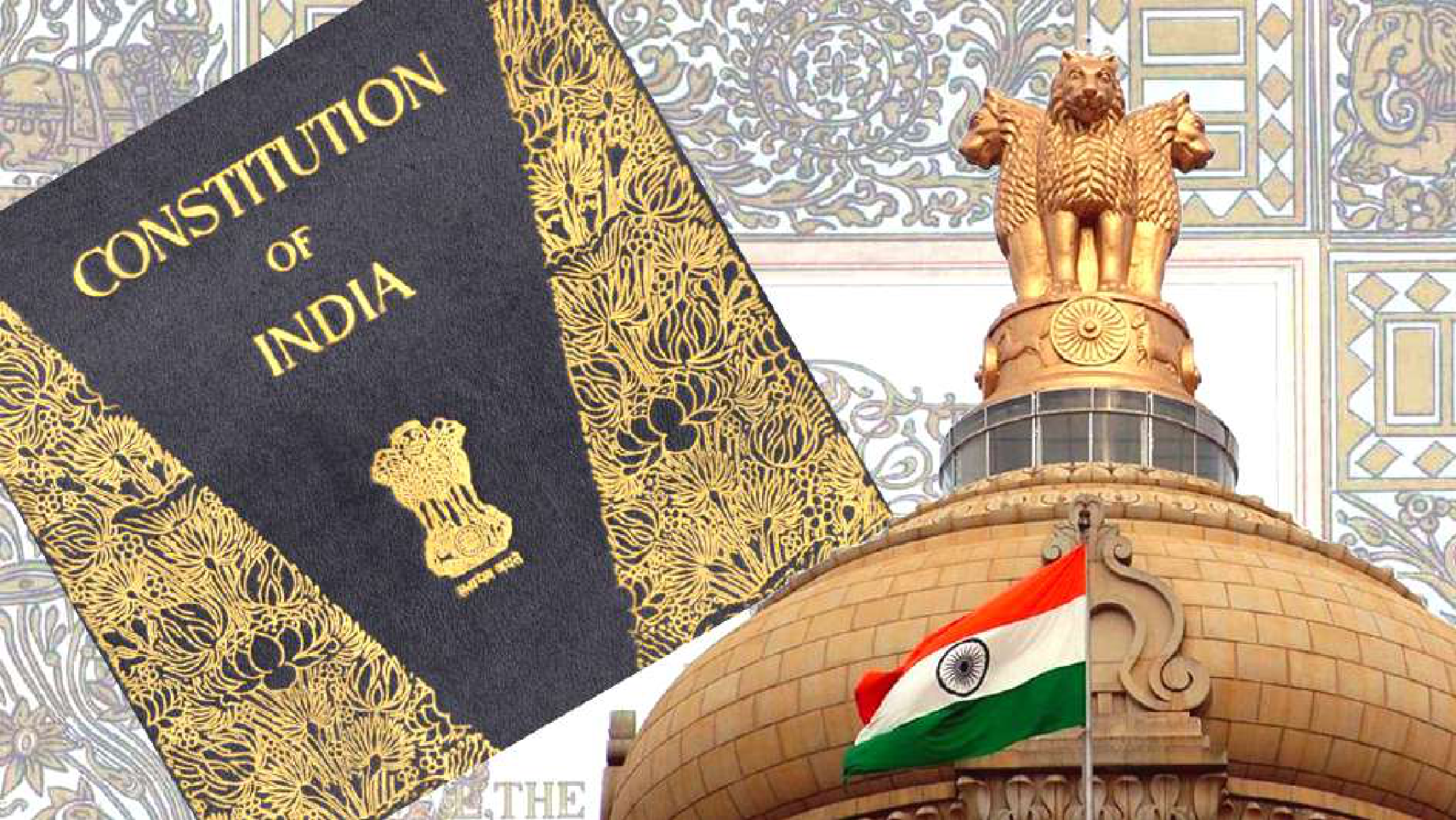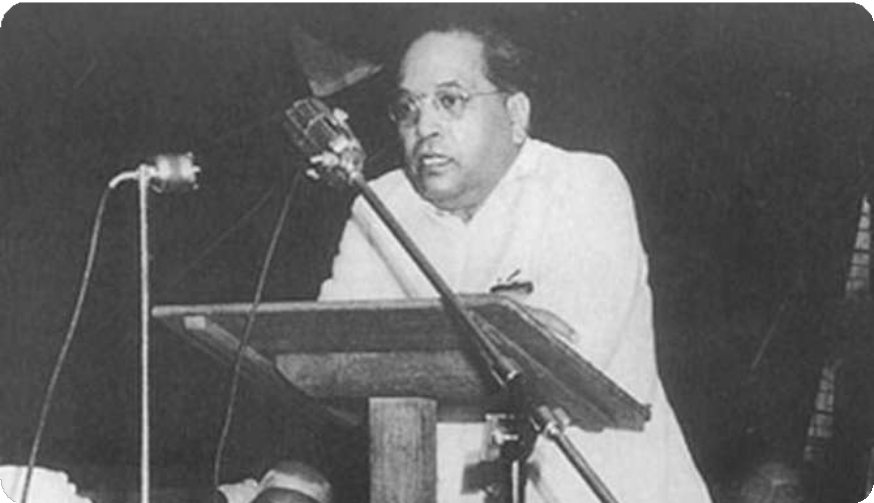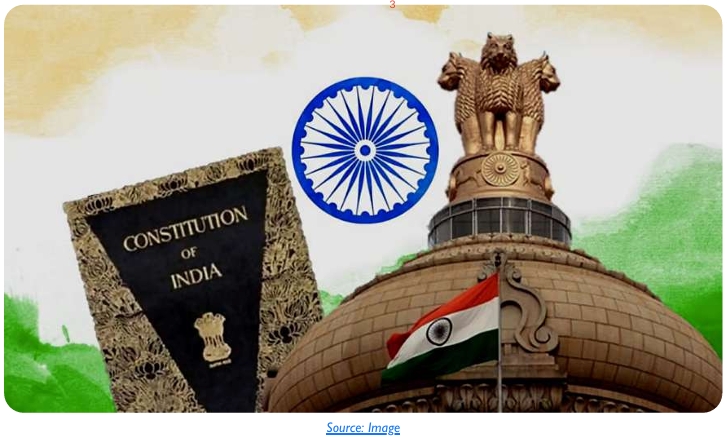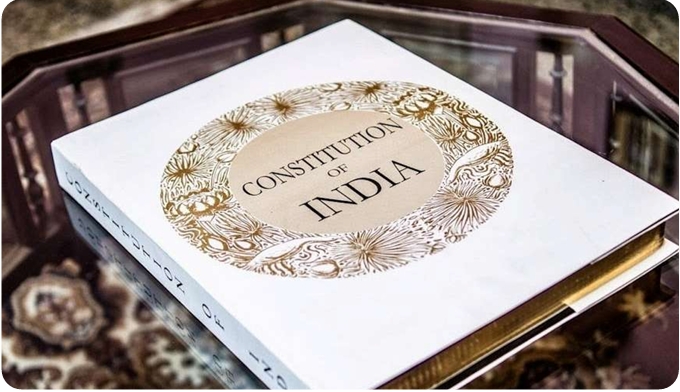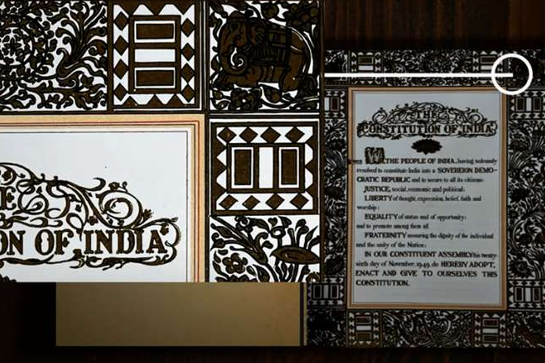We are working on a series of posters, 75 in total with the team that will cover various aspects of the constitution of India, its formation, constituent assembly and its debates, the diverse groups of people involved in its formation, and constitution as a living document. Artist Shoeb Shahid has been selected as the designer of these posters.
We are planning to do this in three phases, phase 1 (26th January, 2025) we will have around 30 panels in both English and Hindi, phase 2 (by 14th April) will increase this to around 50, and the last phase (1st July) will take it all the way up to 75. A total of 34 panels have been made so far, 17 of these panels in English, and 17 in Hindi are already prepared.
Our Journey of Self-Determination
Our freedom struggle was not just a journey of freeing the country from a foreign nation but also of taking control of our nation’s destiny. Since the very beginning our leaders led the movement with “Swaraj is our birthright”
The idea of Swaraj led to a constant demand for self- governance with the power to have our own Constituent Assembly to draft our Constitution.
“Swaraj would not be a free gift of the British Parliament but a declaration of India’s full self expression- the Constitution of India would be framed as per the wishes of the Indians.”
-Written by Mahatma Gandhi in an article “Independence” published in Young India in 1922.
Events leading to Purna Swaraj:
- 1919 Government of India Act- This fell short of true self-governance.
- Non-Cooperation Movement- Frustrated, leaders initiated the Non-Cooperation Movement.
- Motilal Nehru’s National Demand, 1924- This sought a Constitution with Fundamental Rights, but Britain rejected this.
- Simon Commission Protests, 1927- Britain formed the all-British Simon Commission to draft a Constitution, prompting nationwide protests.
- Demand for greater autonomy- British included Indians in discussions on reforms, but we wanted more.
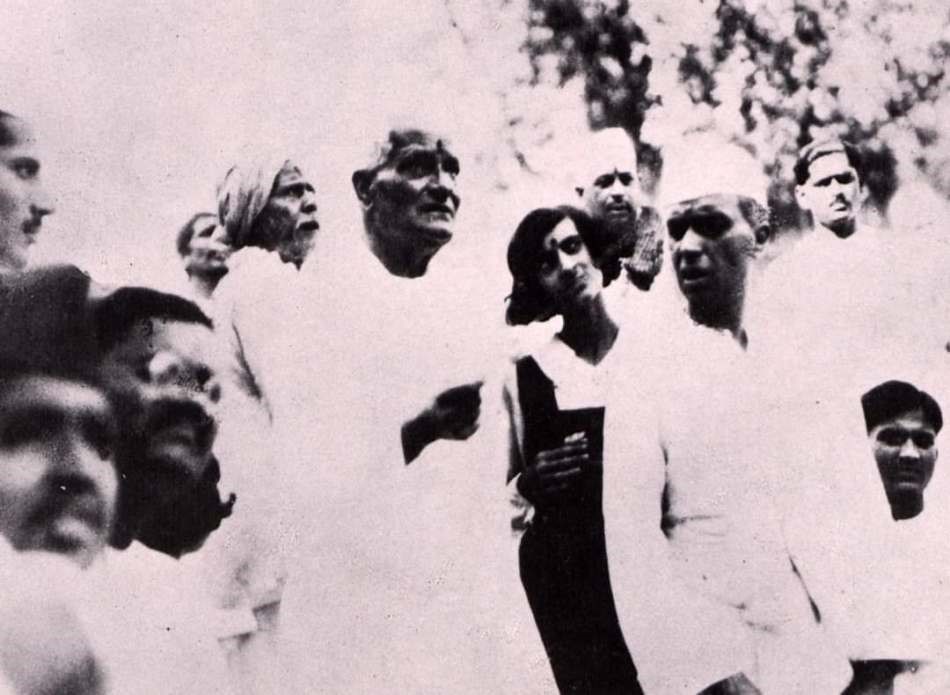
Declaration of Purna Swaraj
The British were offering freedom but within the domain of the Crown. However, our demand was for Purna Swaraj– complete independence from the foreign rule.
“We believe that it is the inalienable right of the Indian people, as of any other people, to have freedom and to enjoy the fruits of their toil and have the necessities of life, so that they may have full opportunities of growth….The Constitution of India must be framed, without outside interference, by a Constituent Assembly elected on the basis of adult franchise.”
- Jawaharlal Nehru declared in his speech of Purna Swaraj in 1930 at Lahore Session.
For the first time the demand and intentions were made clear- not only self rule but self-determination. Hence, now, the negotiations included the right to frame our own Constitution. Eventually, after many give and take, Cabinet Mission plans were proposed, to create a Constituent Assembly. This Constituent Assembly would make the Constitution for the independent India!

Becoming of our Constitution Assembly
- 1935: Indian National Congress officially demanded the creation of a Constituent Assembly.
- 1940: British offered more representation in the existing Viceroy’s council instead of a separate Constituent Assembly. This was rejected.
- 1942: The Cripps Mission proposed an assembly to frame a new constitution. This failed too.
- 1946 – British Cabinet Mission proposed a plan to form a Constituent Assembly with representatives elected from provincial assemblies.
- July 1946: Elections were held in British India to select representatives for the Constituent Assembly. Princely states were invited to send representatives.
- December 9, 1946: The first session of the Constituent Assembly was convened in New Delhi.
Representation in the Constituent Assembly
The Constituent Assembly had 389 members from different parties like Indian National Congress, Muslim League, Unionist party, Unionist Party (Muslims), Scheduled Caste Federation, Communist party of India, Krishak Praja Party, Akali and the Independents.
How were our members chosen?
Of the 389 members, 292 were elected by the Provincial Legislative Assemblies and 97 were nominated, mostly by Princely States.
And so it began…
The Constituent Assembly met for the first time in New Delhi on 9 December, 1946.
“There is no reason why our Constituent Assembly, in spite of the obstructions in its way, should not succeed in doing its work. If we are sincere, if we respect each other’s opinion, we shall develop so much insight that we will not only be able to understand each other’s thoughts, but also be able to go deep to the root and understand each other’s real troubles. We will then function in a manner that no one will give no one cause to think that he has been ignored or that his opinion has not been respected.”
Opening speech by Constituent Assembly Chairman, Dr Rajendra Prasad on 11 December 1946.
On 13th December, 1946, Pandit Nehru presented the Objective Resolution which aimed to establish India as an:
- independent, sovereign, democratic republic, ensuring justice, equality, and freedom for all citizens.
- ensuring social, economic, and political justice, equality of status, freedom of thought, expression, belief, faith, and worship.
- underscoring commitment to safeguarding the rights of minorities, backward communities, and vulnerable groups.
- The resolution was agreed and passed by all the members on 22nd January 1947.

Tryst with Destiny
On 15th August we gained independence but were also partitioned into two nations: India and Pakistan. Almost 1/3rd members of the Constituent Assembly moved to Pakistan and the total number fell from 389 to 299.
Emotions on the eve of Independence day, i.e., 14th August, 1947
“The country, which was made by God and Nature to be one, stands divided today. Separation from near and dear ones, even from strangers after some association, is always painful. I would be untrue to myself if I did not at this moment confess to a sense of sorrow in this separation. But I wish to send on your behalf and my own greetings to the people of Pakistan, which till today has been a part and parcel of ourselves..”
– Dr Rajendra Prasad
“We have achieved this freedom, a new question confronts us, which is even more vital. That struggle is over but a fresh one of a different type is to begin; this new struggle is not to be fought against any outsider but is to be settled among our own selves.. Now the time has come when we shall have to shoulder great responsibilities when there will be no room for clapping and for high-sounding slogans”
– Chaudhri Khaliquzzaman
“I have a list here of nearly a hundred prominent women of all communities who have expressed a desire to associate themselves with this ceremony… It is in the fitness of things that this first flag that will fly over this august House should be a gift from the women of India. We have donned the saffron colour, we have fought, suffered and sacrificed in the cause of our country’s freedom. We have today attained our goal. In presenting this symbol of our freedom, we once more offer our services to the nation. We pledge ourselves to work for a great India, for building up a nation that will be a nation among nations…”
-Hansa Mehta
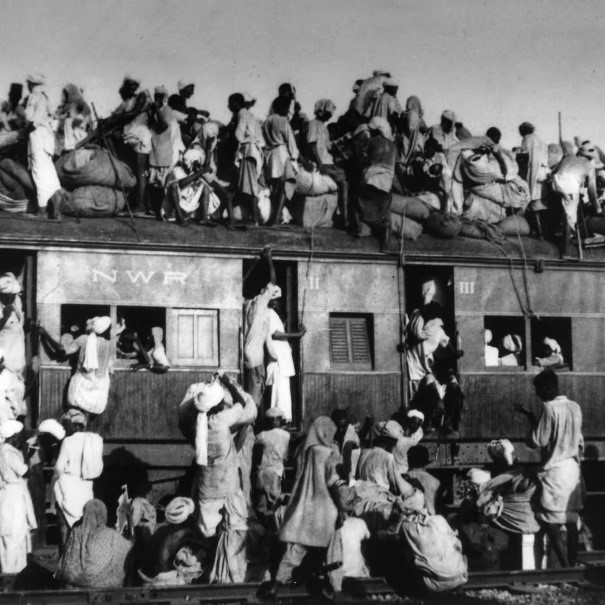
We the People: The Birth of India’s Constitution
The Constituent Assembly sat for over the next 2 years and 11 months. The Assembly held 11 sessions over 165 days, during which each article was meticulously debated. Around 2,000 amendments were proposed, and 1,000 were accepted.
The Whens
- First Session – 13th Dec 1946 to 22nd Jan 1947
- Second session- 27th Feb 1947 to 30th Aug 1947
- Draft Constitution (B.N. Rau)- October 1947
- First Draft Constitution- 27th Oct 1947 to 21st Feb 1948
- Public circulation of Draft Constitution-21st Feb 1948 to 26th Oct 1948
- Debates on the draft Constitution -4th Nov 1948 to 17th Oct 1949
- Revision-17th Oct 1949 to 14th Nov 1949
- Second reading of the draft Constitution-14th Nov 1949 to 16th Nov 1949
- Third reading of the draft Constitution-17th Nov 1949 to 26th Nov 1949
- Enactment and adoption of the Constitution- 26th Nov 1949 to 26th Jan 1950
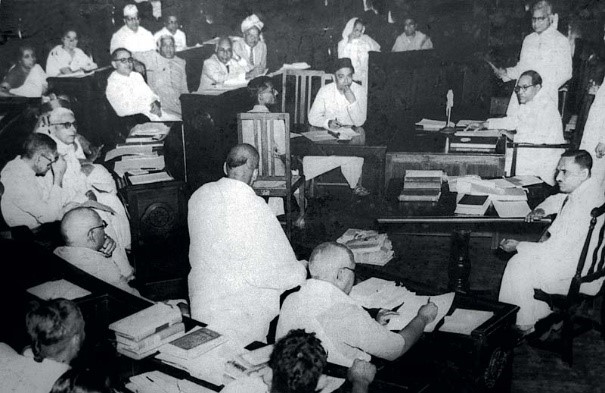
The How
Framing of the Indian Constitution was a process which demanded sharing of intellectual ideas, outlining vision for a newborn nation and creating a concrete framework that would stand the test of the time. There were many different topics that needed careful deliberations and that is why the method of debates and voting was adopted. There were also different demands and ideologies that needed space to be heard, therefore different committees were formulated for continuous debates and discussions.
Important Committees
- Union Powers Committee
- Union Constitution Committee
- Provincial Constitution Committee
- Drafting Committee
- Advisory Committee on Fundamental Rights, Minorities and Tribal and Excluded Areas
- Rules of Procedure Committee
- States Committee
- Steering Committee
- Finance and Staff Committee
- Special Committee to examine the draft Constitution
- Credentials Committee
- House Committee
- Order of Business Committee
- Ad-Hoc Committee on the National Flag
- Committee on the Functions of the Constituent Assembly
- Ad-Hoc Committee on the Supreme Court
- Committee on Chief Commissioners’ provinces
- Expert Committee on the Financial Provisions of the Union Constitution
- Linguistic Provinces Commission
- Press Gallery Committee
- Ad-Hoc committee on Citizenship
There were 8 major committees to discuss the broader issues and then there were 13 minor committees which debated and discussed specific issues at hand.
Constitutional Advisor- Sir B N Rau
- Sir Benegal Narsing Rau was one of the foremost Indian jurists of his time who played a key role in preparing the first draft of the Constitution of India.
- He was a distinguished Indian civil servant, jurist, diplomat and statesman.
- He was deputed on a world tour to meet with constitutional law experts and seek their inputs on different features of the Draft Constitution.
In the last week of October 1947 Rau’s draft was ready. It contained 240 Articles and 13 Schedules and was presented to the Drafting Committee on 27th October 1947. A major part of the deliberations of the Constituent Assembly were centred around this draft.
Dr Ambedkar, Chairman and Members of the Drafting Committee
The entire Assembly would meet for a fixed period to debate various topics and vote on them. Meanwhile, a specialised committee would convene regularly to consider the debates and prepare drafts for final voting. This specialised committee was known as the Drafting Committee.
Chairman of the Drafting Committee:
- Dr B.R. Ambedkar (Chairman)
Members of the Drafting Committee:
- N. Gopalaswamy Ayyangar
- Mohammed Saadullah
- Alladi Krishnaswami Ayyar
- K.M. Munshi
- B.L. Mittar substituted by N Madhava Rao following his resignation on health issues
- Dr D.P. Khaitan (died in 1948 and was substituted by T.T. Krishnamachari)
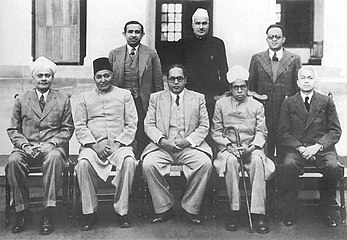
International Influence
Apart from the debates and discussions at the committee level, the makers of the Constitution also took inspiration from various Constitutions of the world.
- United Kingdom: Parliamentary system and rule of law.
- United States: Fundamental rights, independence of Judiciary, Judicial Review.
- Ireland: Directive Principles of State Policy, Method of Election of the President.
- Canada: Federal structure with a strong central government.
- Australia: Concurrent powers and terminology.
- Weimar Republic (Germany): Emergency powers.
- South Africa: Amendment procedures
- Japan: Concept of “Procedure established by law”
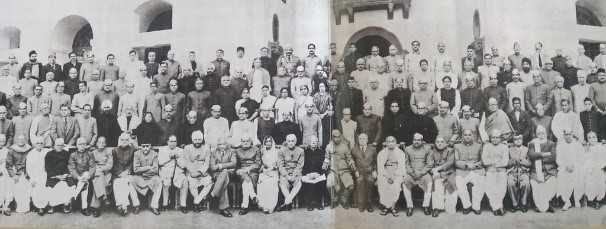
Inclusivity- The Core of the Constitution
The Constituent Assembly of India was a remarkably diverse body that represented a wide spectrum of Indian society.
- Religion:
- The Assembly included members from various religious communities, reflecting India’s pluralistic society.
- Hindus made up the majority, as the Hindu population was the largest.
- Muslims constituted a significant minority in the Assembly. However, after the partition and the creation of Pakistan, Muslim representation in the Indian Constituent Assembly decreased.
- Other Minorities: There were representatives from Sikh, Christian, Parsi, Jain, and Buddhist communities, though their numbers were small.
- Caste:
- Scheduled Castes and Tribes: Efforts were made to ensure representation of marginalised communities. Leaders like Dr. B.R. Ambedkar (Scheduled Caste) and Jaipal Singh Munda (Tribal community) played significant roles.
General and Other Backward Classes: Representatives also came from non-Scheduled Caste backgrounds, but the inclusion of backward classes remained minimal.
- Professional and Educational Backgrounds:
The Assembly consisted of lawyers, scholars, freedom fighters, social activists, and educationists. Figures like Dr. Rajendra Prasad, Dr. B.R. Ambedkar, Jawaharlal Nehru, and K.M. Munshi brought expertise in law, governance, and social reform
“Who are represented in this house today? There are Hindus; there are some Muslims too…There are the representatives of the Province of Assam…You have the Scheduled Castes. The Sikhs are present here;. The Anglo-Indians..the Indian Christians..the Parsis also. Tribal areas and the Adivasis are represented here.
-Syama Prasad Mookherjee
The Women of the Constitution
Among the hundreds of men in the Assembly were 15 exceptional women. These women made significant contributions to critical debates on fundamental rights, social justice, and gender equality, advocating for provisions that would protect and promote women’s rights in the new Constitution. Despite their small numbers, their involvement laid the groundwork for future advancements in women’s rights and representation in India.
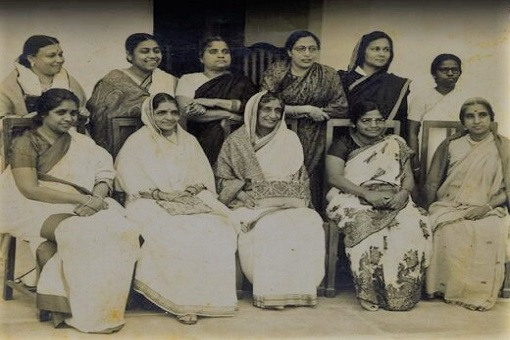
Women Members
Ammu Swaminathan, Annie Maccarene, Begum Aizaz Rasul, Dakshayani Velayudhan, Durgabai Deshmuk, Hansa Jivraj Mehta, Kamala Chaudhary, Leela Roy, Malti Chaudhary, Poornima Baneerji, Rajkumari Amrit Kaur, Renuka Ray, Sarojini Naidu, Sujeta Kriplani and Vijaylaxmi Pandit.
Agree to Disagree
Having an assembly with heterogeneous social, political and intellectual ideologies, members did not always agree on various topics. It was a rather argumentative assembly.
Take for example the debate on Right to Vote:
The drafting Committee proposed that the general election in the country would take place by universal adult franchise, that is, everybody despite their caste, religion, gender, educational background would have the right to vote. India was amongst the first countries to do so. To give the right to vote to its whole populace at the time of independence. For context, the USA gave the right to vote to African-Americans almost 180 years after their independence.
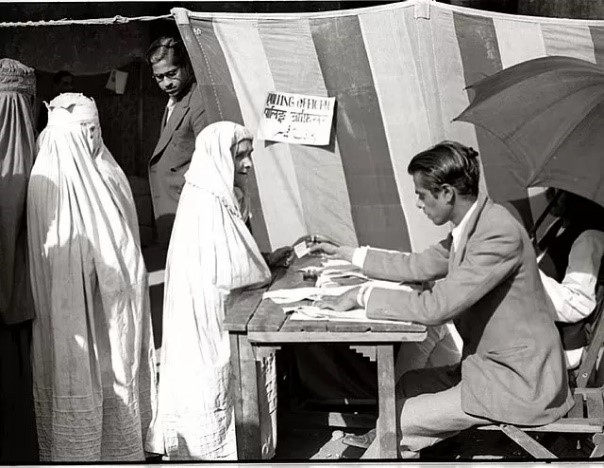
The varying opinions were:
Members who opposed it
‘Adult franchise presupposes that the electorate is enlightened. Where the electorate is not enlightened there cannot be parliamentary democracy.’ – Brajeshwar Prasad
“Without proper education, without the proper development of patriotism in this country, …this is a dangerous weapon”- M Thirumala
“Literacy is the “minimum of requirement in democratic citizenship”- KT Shah
Members who supported it
“Because we have adult suffrage, our legislature will express the will of the nation as a whole..”- Krishna Chandra Sharma
“India adopted the principle of adult franchise with an abundant faith in the common man and the ultimate success of democratic rule”- Alladi Krishnaswamy Iyer
“If we had not provided an adult franchise what else could we have provided for? Years of freedom struggle and revolt against foreign rule led to India’s independence and the constitution-making project. And adopting democracy and the adult franchise was not a novel but a natural choice.”- Kamplapati Tiwari
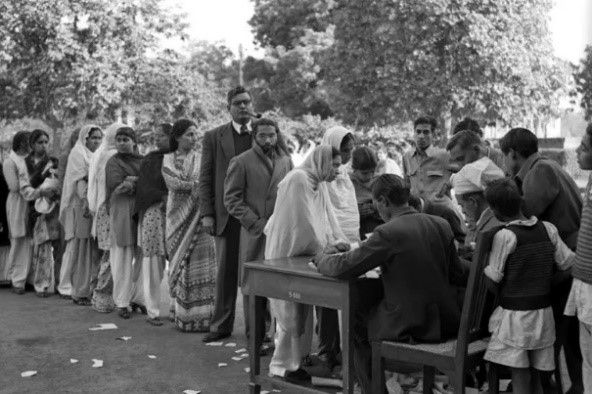
Eventually, a majority members voted in favour of universal adult franchise holding the fundamental value of equality and democracy. The nation came first and weaving a Constitution that secures maximum rights for all citizens was the ultimate goal for the members of the Constituent Assembly.
Adopt, enact and give to ourselves
On 25th November 1949, Dr B R Ambedkar concluded the process of the making of the Constitution by these words:
“The credit that is given to me does not really belong to me. It belongs partly to Sir B. N. Rau, the Constitutional Adviser to the Constituent Assembly, who prepared a rough draft of the Constitution for the consideration of the Drafting Committee. A part of the credit must go to the members of the Drafting Committee who, as I have said, have sat for 141 days and without whose ingenuity of devise new formulae and capacity to tolerate and to accommodate different points of view, the task of framing the Constitution could not have come to so successful a conclusion. Much greater share of the credit must go to Mr. S. N. Mukherjee, the Chief Draftsman of the Constitution. His ability to put the most intricate proposals in the simplest and clearest legal form can rarely be equaled, nor his capacity for hard work. He has been an acquisition to the Assembly. Without his help, this Assembly would have taken many more years to finalise the Constitution. I must not omit to mention the members of the staff working under Mr. Mukherjee. For, I know how hard they have worked and how long they have toiled sometimes even beyond midnight. I want to thank them all for their effort and their cooperation.”
On the following day, November 26, 1949, our Constitution was adopted. However, to honour the journey that began on January 26, 1930, with the declaration of Purna Swaraj, the Constitution was enacted in its entirety on January 26, 1950, with the signatures of 284 members. This day is celebrated as Republic Day.
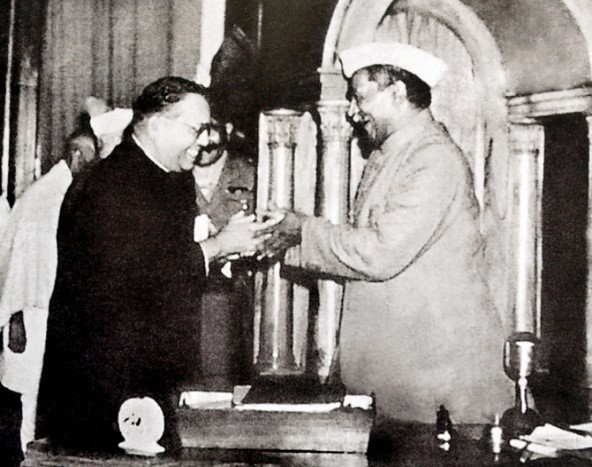
Art and Artists of the Constitution
Our Constitution is far more than words on a page; it’s a representation of our highest principles, human dignity, and the rights and welfare of every citizen.
The original manuscript of the Indian Constitution is not just a legal document; it’s a profound artistic tribute to India’s rich heritage. Nandalal Bose and his team at Shantiniketan spent nearly four years meticulously illustrating each page with intricate designs inspired by Indian miniature painting. Each part of the Constitution captures India’s historical and cultural journey—from the Vedic and Gupta periods to the Mughal and British eras, and finally, to the freedom struggle. The borders and illustrations embody the artist’s vision of India’s chronicle towards independence, honoring the resilience, leaders, and diverse legacy that shaped the nation.
The original copy is calligraphed, with care by Prem Behari Narain Raizada on handmade millbourne loan paper. He started doing calligraphy on 28th November 1949 and completed it by April of 1950. The Hindi version was done by Vasant Krishna Vaidya.
Through these artistic tributes, our Constitution captures not just the law of the land but the heart of a nation.
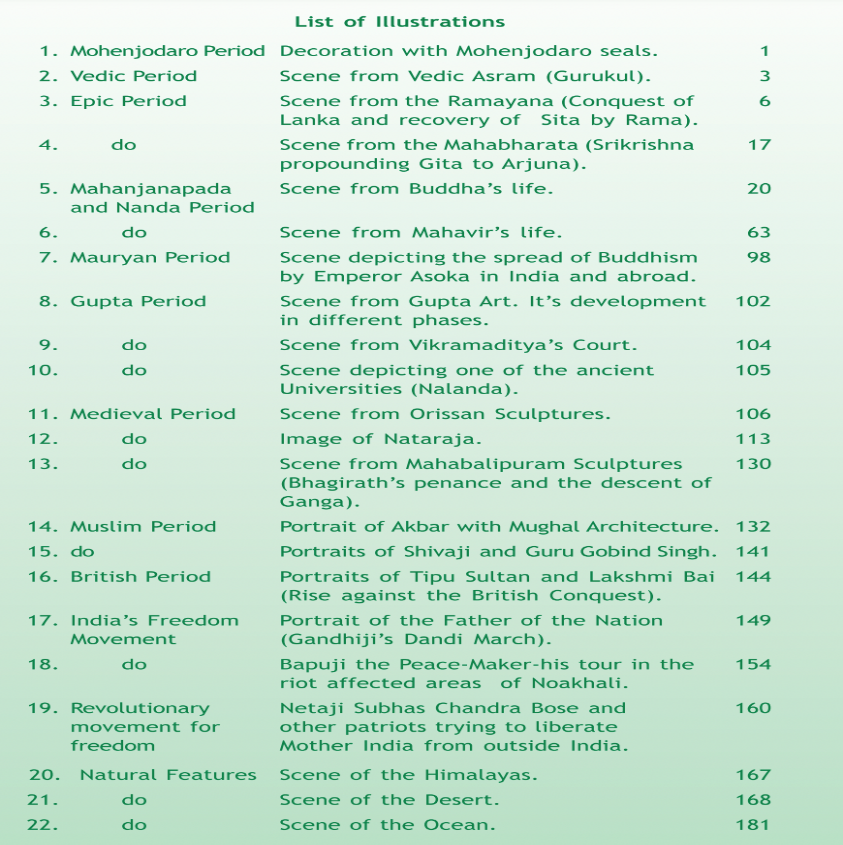
The Final Outcome
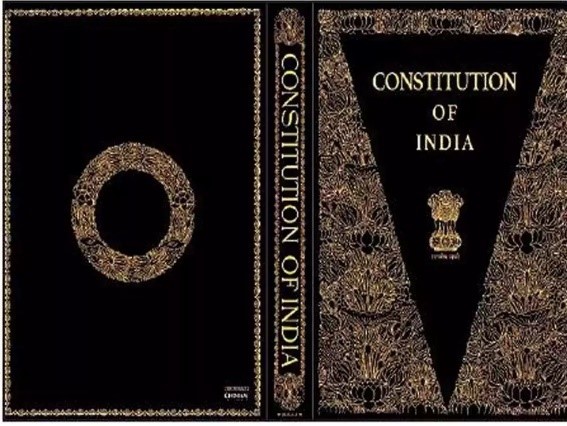
The Constitution is a beautifully written document. Through an extensive framework which contains 22 parts with 395 Articles and 12 schedules, it secures values (equality, justice, liberty, fraternity), fundamental rights, social justice, a well-defined structure of the States along with its responsibilities and many other important elements of our nation building.
